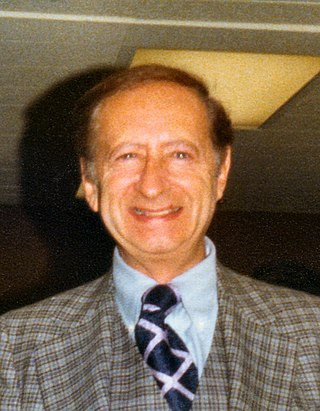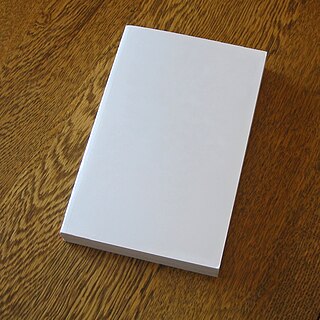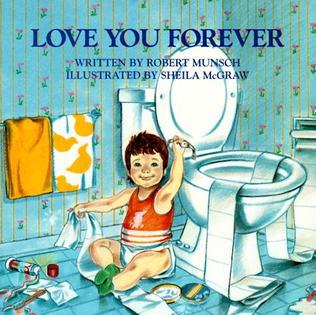Related Research Articles

Robert Albert Bloch was an American fiction writer, primarily of crime, psychological horror and fantasy, much of which has been dramatized for radio, cinema and television. He also wrote a relatively small amount of science fiction. His writing career lasted 60 years, including more than 30 years in television and film. He began his professional writing career immediately after graduation, aged 17. Best known as the writer of Psycho (1959), the basis for the film of the same name by Alfred Hitchcock, Bloch wrote hundreds of short stories and over 30 novels. He was a protégé of H. P. Lovecraft, who was the first to seriously encourage his talent. However, while he started emulating Lovecraft and his brand of cosmic horror, he later specialized in crime and horror stories working with a more psychological approach.

The Cat in the Hat is a 1957 children's book written and illustrated by American author Theodor Geisel, using the pen name Dr. Seuss. The story centers on a tall anthropomorphic cat who wears a red and white-striped top hat and a red bow tie. The Cat shows up at the house of Sally and her brother one rainy day when their mother is away. Despite the repeated objections of the children's fish, the Cat shows the children a few of his tricks in an attempt to entertain them. In the process, he and his companions, Thing One and Thing Two, wreck the house. As the children and the fish become more alarmed, the Cat produces a machine that he uses to clean everything up and disappears just before the children's mother comes home.

A humorist is an intellectual who uses humor, or wit, in writing or public speaking, but is not an artist who seeks only to elicit laughs. Humorists are distinct from comedians, who are show business entertainers whose business is to make an audience laugh. It is possible to play both roles in the course of a career. A raconteur is one who tells anecdotes in a skillful and amusing way.

A paperback book is one with a thick paper or paperboard cover, and often held together with glue rather than stitches or staples. In contrast, hardcover (hardback) books are bound with cardboard covered with cloth, leather, paper, or plastic.

Ballantine Books is a major book publisher located in the United States, founded in 1952 by Ian Ballantine with his wife, Betty Ballantine. It was acquired by Random House in 1973, which in turn was acquired by Bertelsmann in 1998 and remains part of that company today. Ballantine's original logo was a pair of mirrored letter Bs back to back, while its current logo is two Bs stacked to form an elaborate gate. The firm's early editors were Stanley Kauffmann and Bernard Shir-Cliff.

The Hitchhiker's Guide to the Galaxy is the first book in the Hitchhiker's Guide to the Galaxy comedy science fiction "trilogy of five books" by Douglas Adams, with a sixth book written by Eoin Colfer. The novel is an adaptation of the first four parts of Adams's radio series of the same name, centering on the adventures of the only man to survive the destruction of Earth; while roaming outer space, he comes to learn the truth behind Earth's existence. The novel was first published in London on 12 October 1979. It sold 250,000 copies in the first three months.
Bennett Alfred Cerf was an American writer, publisher, and co-founder of the American publishing firm Random House. Cerf was also known for his own compilations of jokes and puns, for regular personal appearances lecturing across the United States, and for his weekly television appearances for over 17 years on the panel game show What's My Line?

Michael O'Donoghue was an American writer and performer. He was known for his dark and destructive style of comedy and humor, and was a major contributor to National Lampoon magazine. He was the first head writer of Saturday Night Live and the first performer to deliver a line on the series.

Green Eggs and Ham is a children's book by Dr. Seuss, first published on August 12, 1960. As of 2019, the book has sold 8 million copies worldwide. The story has appeared in several adaptations, starting with 1973's Dr. Seuss on the Loose starring Paul Winchell as the voice of both characters, and more recently an animated TV series of the same name on Netflix.

Three Men in a Boat (To Say Nothing of the Dog), published in 1889, is a humorous account by English writer Jerome K. Jerome of a two-week boating holiday on the Thames from Kingston upon Thames to Oxford and back to Kingston. The book was initially intended to be a serious travel guide, with accounts of local history along the route, but the humorous elements took over to the point where the serious and somewhat sentimental passages seem a distraction to the comic novel. One of the most praised things about Three Men in a Boat is how undated it appears to modern readers – the jokes have been praised as fresh and witty.

Love You Forever is a 1986 children's picture book written by Robert Munsch and illustrated by Sheila McGraw. The story centers on a mother who sings a lullaby to her son at each stage of his life. During his childhood, she becomes frustrated with his rebellious nature, yet always sings to him after he falls asleep. The mother and son grow older, with the former becoming sick due to old age, and one day unable to sing the lullaby. The son sings the song for her, then sings it to his newborn daughter.

Little Golden Books is a series of children's books, published since 1942.
Roger Price was an American humorist, author and publisher, who created Droodles in the 1950s, followed by his collaborations with Leonard B. Stern on the Mad Libs series. Price and Stern became partners with Larry Sloan in the publishing firm Price Stern Sloan.
Grove Press is an American publishing imprint that was founded in 1947. Imprints include: Black Cat, Evergreen, Venus Library, and Zebra. Barney Rosset purchased the company in 1951 and turned it into an alternative book press in the United States. He partnered with Richard Seaver to bring French literature to the United States. The Atlantic Monthly Press, under the aegis of its publisher, Morgan Entrekin, merged with Grove Press in 1991. Grove later became an imprint of the publisher Grove/Atlantic, Inc.

The Seven Lady Godivas: The True Facts Concerning History's Barest Family is a picture book of the tale of Lady Godiva, written and illustrated by Dr. Seuss. One of Seuss's few books written for adults, its original 1939 publication by Random House was a failure and was eventually remaindered. However, it later gained popularity as Seuss himself grew in fame, and was republished in 1987 by "multitudinous demand".

Miss Marple's Final Cases and Two Other Stories is a short story collection written by Agatha Christie and first published in the UK by Collins Crime Club in October 1979 retailing at £4.50. It was the last Christie book to be published under the Collins Crime Club imprint although HarperCollins continue to be the writer's UK publishers.
Beechwood Bunny Tales is a series of children's books written by French author Geneviève Huriet and illustrated by Loïc Jouannigot. The original books have been published in France by Éditions Milan since 1987. English translations of the first seven stories were released in the United States during 1991 and 1992 by Gareth Stevens Publishers. Including this version, Beechwood has been translated into 23 languages in 19 countries, and has sold about 750,000 copies in its native country.

Harvey Kurtzman's Jungle Book is a graphic novel by American cartoonist Harvey Kurtzman, published in 1959. Kurtzman aimed it at an adult audience, in contrast to his earlier work for adolescents in periodicals such as Mad. The social satire in the book's four stories targets Peter Gunn-style private-detective shows, Westerns such as Gunsmoke, capitalist avarice in the publishing industry, Freudian pop psychology, and lynch-hungry yokels in the South. Kurtzman's character Goodman Beaver makes his first appearance in one of the stories.
Max Harzof known just as Harzof, was an American bookseller who was the owner of the Lexington Bookshop in New York. During his career, he handled many rare books, including items from the library of Herman Melville.

The Dragon and the Doctor is a 1971 picture book written and illustrated by Barbara Danish. The story concerns a dragon with a sore tail who goes to see a doctor. The Dragon and the Doctor was the first book published by the Feminist Press. The publisher's founder, Florence Howe, had not initially planned to produce children's literature but a notification by a third party in a feminist newsletter that the press would be publishing children's books drew significant interest. Thus convinced, Howe enlisted Danish to adapt the Chinese picture book I Want to Be a Doctor into a new story with a female doctor protagonist.